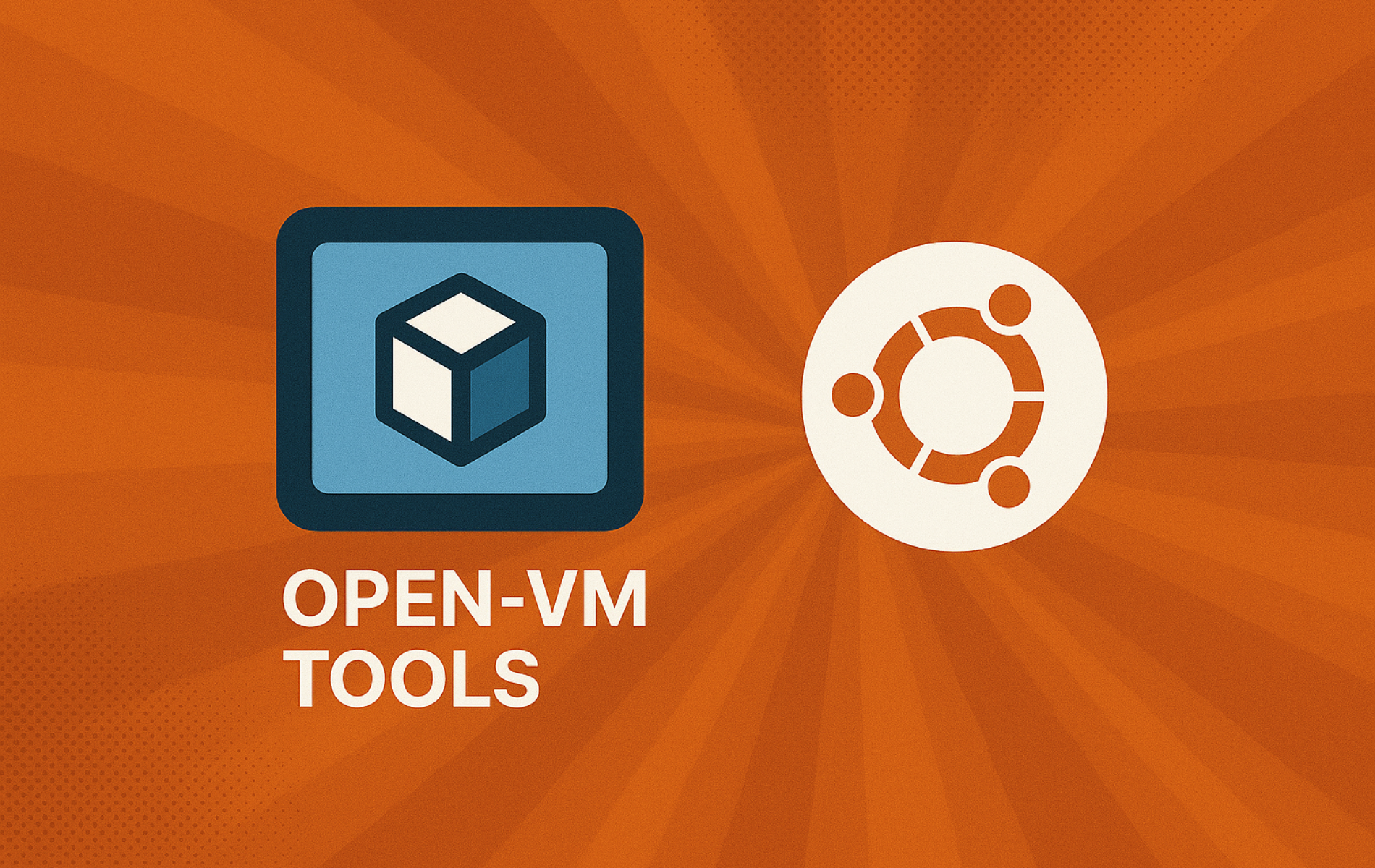Open-VM Tools is the open-source implementation of VMware Tools. VMware maintains the project and distributes it through Ubuntu’s default repositories. If you run Ubuntu as a guest operating system inside VMware Workstation, VMware Player, or VMware ESXi, installing Open-VM Tools enables seamless clipboard sharing between host and guest, automatic screen resizing when you resize the VM window, drag-and-drop file transfers, shared folders, and accurate time synchronization. By the end of this guide, you will have Open-VM Tools installed and running on your Ubuntu system, with the appropriate package selected for desktop or server environments.
Update Ubuntu Before Open-VM Tools Installation
Before installing any new software, update your existing Ubuntu packages to ensure compatibility and reduce potential security vulnerabilities:
sudo apt update && sudo apt upgradeFor a more detailed guide on updating packages on Ubuntu, refer to our dedicated article.
Choose Your Open-VM Tools Package
By default, Ubuntu virtual machines do not include Open-VM Tools. Therefore, you need to install the package manually to enable VMware integration features. VMware recommends Open-VM Tools as the replacement for the legacy proprietary VMware Tools installer that VMware previously distributed through CD images.
Ubuntu offers three packages depending on your environment:
| Package | Environment | Includes | Best For |
|---|---|---|---|
| open-vm-tools-desktop | Desktop GUI | Core tools + clipboard, drag-drop, display resize | Ubuntu Desktop users |
| open-vm-tools | Server/Headless | Core tools only (no GUI features) | Ubuntu Server users |
| open-vm-tools-dev | Development | Headers and libraries for building modules | Developers and contributors |
For most desktop users, install open-vm-tools-desktop to get the full integration experience. In contrast, server administrators running headless VMs only need the base open-vm-tools package.
Install Open-VM Tools for Desktop
For Ubuntu Desktop with a graphical interface, install open-vm-tools-desktop to enable clipboard sharing, drag-and-drop, and automatic display resizing:
sudo apt install open-vm-tools-desktopInstall Open-VM Tools for Server
For headless Ubuntu Server environments without a GUI, install the minimal open-vm-tools package instead:
sudo apt install open-vm-toolsInstall Development Package (Optional)
Additionally, developers who need to build custom modules or contribute to the open-vm-tools project can install the development headers:
sudo apt install open-vm-tools-devRestart to Apply Changes
After installation, reboot your system so the kernel modules can load. Open-VM Tools uses kernel modules to communicate with VMware’s virtual hardware, and these modules only initialize during boot. Without a reboot, features like shared folders and automatic display resizing will not work.
sudo rebootVerify Open-VM Tools Installation
Once you have rebooted, verify that Open-VM Tools installed correctly and that the service is running.
Check Installed Package Version
First, confirm the installed package version:
apt-cache policy open-vm-toolsLook for the Installed: line. This should show a version number, not (none). Below is example output showing a successful installation:
open-vm-tools:
Installed: 2:13.x.x-x
Candidate: 2:13.x.x-x
Version table:
*** 2:13.x.x-x 500
500 http://archive.ubuntu.com/ubuntu [codename]/main amd64 Packages
The exact version number varies by Ubuntu release. If you see Installed: (none) instead, the package did not install correctly. In that case, re-run the installation command and check for any error messages.
Verify the Service is Running
Next, check that the Open-VM Tools service started successfully:
systemctl status open-vm-toolsA healthy service shows Active: active (running) in the output:
● open-vm-tools.service - Open VM Tools
Loaded: loaded (/usr/lib/systemd/system/open-vm-tools.service; enabled)
Active: active (running)
Troubleshoot Common Issues
If Open-VM Tools features are not working as expected, review the following common problems and their solutions.
Service Not Running After Reboot
If the service failed to start, first check the logs for errors:
sudo journalctl -u open-vm-tools --no-pager | tail -20For example, a healthy log shows messages like:
Started open-vm-tools.service - Open VM Tools. vmtoolsd[1234]: Plugin 'vmsvc' initialized. vmtoolsd[1234]: Plugin 'resolutionKMS' initialized.
If you see errors or the service has not started, re-enable and restart it:
sudo systemctl enable --now open-vm-toolsClipboard or Drag-and-Drop Not Working
These features require the desktop package. To verify your system has it, run:
dpkg -l | grep open-vm-tools-desktopIf you installed the package correctly, you should see output similar to the following:
ii open-vm-tools-desktop 2:13.x.x-x amd64 Open VMware Tools for virtual machines hosted on VMware (GUI)
Otherwise, if nothing appears, install the desktop package and reboot:
sudo apt install open-vm-tools-desktop && sudo rebootFeatures Break After Kernel Update
After a kernel update, the system may need to rebuild the Open-VM Tools kernel modules. In most cases, reinstalling the package resolves this issue:
sudo apt reinstall open-vm-tools open-vm-tools-desktop && sudo rebootService Fails on Non-VMware Systems
Open-VM Tools is designed specifically for VMware virtual machines. If you install it on a physical machine or a VM running under a different hypervisor (such as VirtualBox, KVM, or Hyper-V), the service will fail to start because it cannot detect VMware hardware. This is expected behavior, not an error. If you installed Open-VM Tools by mistake on a non-VMware system, remove it using the commands in the removal section below.
Remove Open-VM Tools
To completely uninstall Open-VM Tools along with all related packages, run the following command:
sudo apt remove --purge open-vm-tools open-vm-tools-desktop open-vm-tools-devAfterward, clean up any unused dependencies that Open-VM Tools installed:
sudo apt autoremoveThis command removes orphaned libraries and utilities that Open-VM Tools installed as dependencies. Depending on your system, APT may remove packages such as libfuse3, libglib2.0, libmspack, and related libraries that your system no longer uses.
The --purge flag in the removal command deletes system configuration files stored in /etc/vmware-tools/. Open-VM Tools does not store user-specific data in home directories, so you do not need any additional cleanup after running these commands.
To confirm removal, check whether APT still shows the package:
apt-cache policy open-vm-toolsA successful removal shows Installed: (none) in the output.
Conclusion
You now have Open-VM Tools installed and running on Ubuntu, enabling clipboard sharing, automatic display resizing, drag-and-drop file transfers, and time synchronization with your VMware host. Going forward, keep Open-VM Tools updated alongside your regular system updates to maintain compatibility with newer VMware releases. Additionally, for other virtualization options on Ubuntu, see our guide on installing VirtualBox on Ubuntu.


